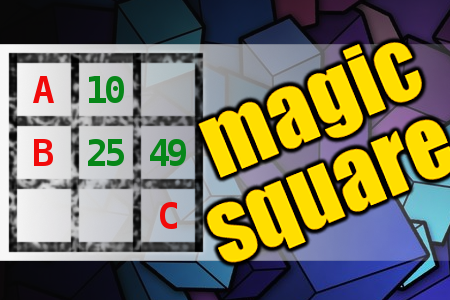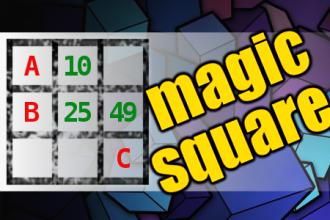MAGIC SQUARE: Calculate A*B-C
The aim is to place the some numbers from the list (9, 10, 16, 25, 26, 32, 48, 49, 55, 74, 96) into the empty squares and squares marked with A, B an C. Sum of each row and column should be equal. All the numbers of the magic square must be different. Find values for A, B, and C. Solution is A*B-C.Correct answers: 0
#brainteasers #math #magicsquare

A woman complained to her vete...
A woman complained to her veterinarian that her dog would start humping her every time he came into the house. "Is there anything you can do?" she asked.
The doctor said, "Well, we could castrate him, and then he would no longer have a sex drive."
The woman replies, "That seems awfully harsh. Couldn't you just clip his nails and do something about his breath?"
The doctor said, "Well, we could castrate him, and then he would no longer have a sex drive."
The woman replies, "That seems awfully harsh. Couldn't you just clip his nails and do something about his breath?"

